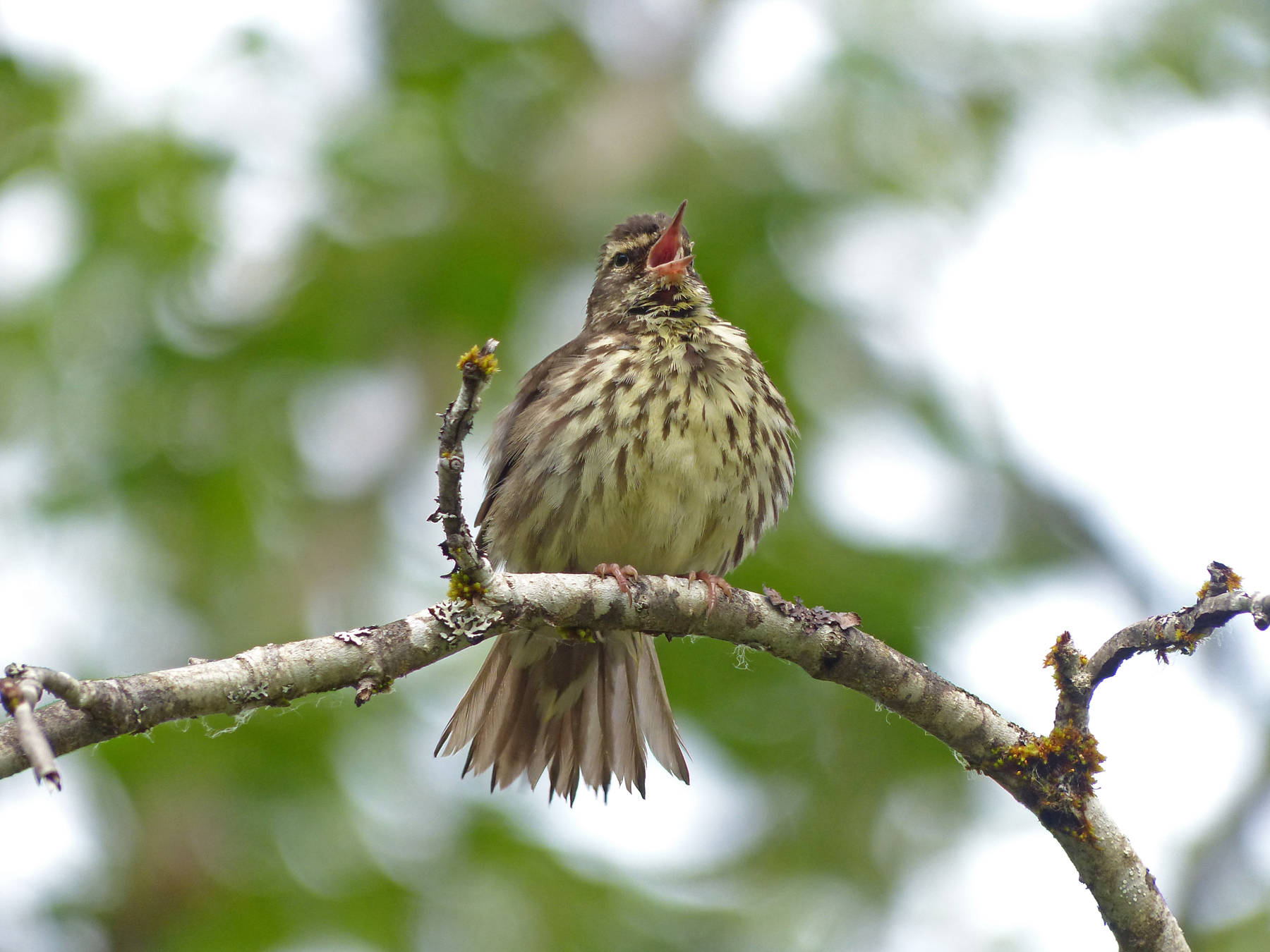By Mary F. Willson
For the Juneau Empire
A big tide-stranded log on the wetlands was studded with lots of little tufts of “moss.” It didn’t look a bit familiar to any of us, but I should have looked more closely — a couple of experts later let us know that those tufts are not moss at all. Rather, they are composed of one species of lichen growing on another species of lichen.
Juneau folks see lichens almost everywhere—they drape gracefully from tree branches, form crusts over bare soils, decorate tree bark, boulders, and cliffs with a variety of colors and designs. They can colonize roof shingles, long-abandoned clothing, foam insulation, and other un-natural substrates. And, we just learned, they can grow on each other, too!
Lichens are composite organisms, commonly consisting of a fungus with a green alga, but sometimes associated with a cyanobacterium, or even with both. A given species of algae or cyanobacteria may associate with different fungal partners. A lichen develops its characteristic shape when the fungus associates with its partner; otherwise, the fungus exists just as a mass of filaments. Does it need the additional input of nutrients from the partners to develop that morphology and to produce spores? Occasionally, other organisms such as yeast (another type of fungus) and bacteria may join the association in some way.
These associations are generally thought to be mutualistic: the fungus provides housing as well as water and nutrients from the atmosphere and sometimes also the substrate, while the other partners provide carbohydrates (by photosynthesis) and cyanobacteria fix nitrogen from the air. In the nutrient exchange between partners, an alga or cyanobacterium is commonly destroyed, but the remaining ones reproduce fast enough to replace the destroyed ones.
Some lichens grow exclusively on other lichens; they are called ‘lichenicolous’ (meaning living on lichens). There are hundreds of species with this specialization, from a variety of evolutionary lineages. It is thought that most of these lichens are parasitic (the fungal partner is presumably the larcenous agent), but some may be pathogens or simply harmless co-habitants.
I had thought to write a whole essay about lichenicolous lichens and their fascinating way of life. I rapidly found out that the arcane taxonomy of unfamiliar names and terminology left me bewildered, so I must content myself with calling attention to an interesting phenomenon that was entirely new to me.
In the case of the tufts on the beach log, a species of Xanthoria was overgrowing a species of Physcia. (But in other regions, different species of Xanthoria may be colonized by a lichenicolous lichen, being the host instead of the invader). Locally, some other lichen invades the spore-bearing structure of common leafy lichens called lettuce lung (Lobaria oregana) and lungwort (L. pulmonaria), making the structure black. Is the invader hijacking the spore-dispersal mechanism of the host?
Here are a few short stories:
—In a grove near the Boy Scout beach, a friend and I heard a strange, repeated sound. We finally located the source: a porcupine was slowly backing down a fairly tall spruce tree, mostly stepping on small dead branches but occasionally slithering a bit from step to step, moaning every few seconds. Finally it reached the ground, shook itself, and trundled off, still moaning. Had it been sampling spruce needles near the top of the tree?
— One sunshiny morning in mid-May, I happened to look out a window to my pond at just the right time, and there was a northern waterthrush, foraging along the edge. (Despite its common name, this little brown warbler is not a thrush.) I hadn’t seen one for years; later, I heard their loud song, over in the Dredge lake area. They are uncommon nesters here, usually making a
cup-nest on the ground, in wooded areas near ponds, where they like to forage in the shallows.
— Later that day, on the lower part of the East Glacier trail, a little group of friends stopped to admire a fine display of small white flowers, several patches of it on a cliff. This species has the very silly common name of Sitka mist-maiden, but bears a more stately name of Romanzoffia sitchensis. It usually blooms a little later than the more famous purple mountain saxifrage, which was still blooming on some cliffs along the trail.
—At Eagle Beach, on one of those sunny days, we saw a nice variety of dabbling ducks, not many of each type, but all clustered in one area near the river. There were gadwalls, green-wing teal, blue-wing teal (not common here), American widgeon, mallards (of course), and a pair of northern shovelers. All these ducks feed on invertebrates and vegetation, often by tipping upside down to reach under the water. Shovelers, however, have an additional way of feeding with a very specialized, broad, flat bill. The relatively large bill is edged with a row of comb-like structures that the shoveler uses to catch small invertebrates and plankton as it sweeps its bill from side to side.
Thanks to Chiska Derr for consultation about larcenous lichens.
• Mary F. Willson is a retired professor of ecology. “On the Trails” appears every Wednesday in the Juneau Empire.

